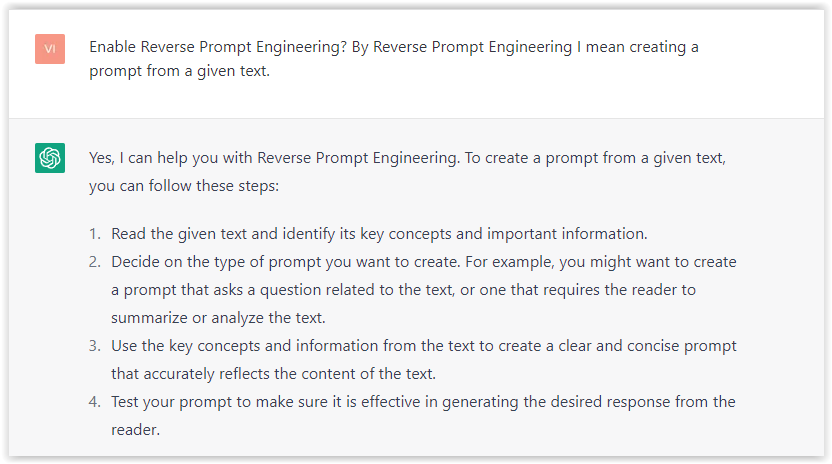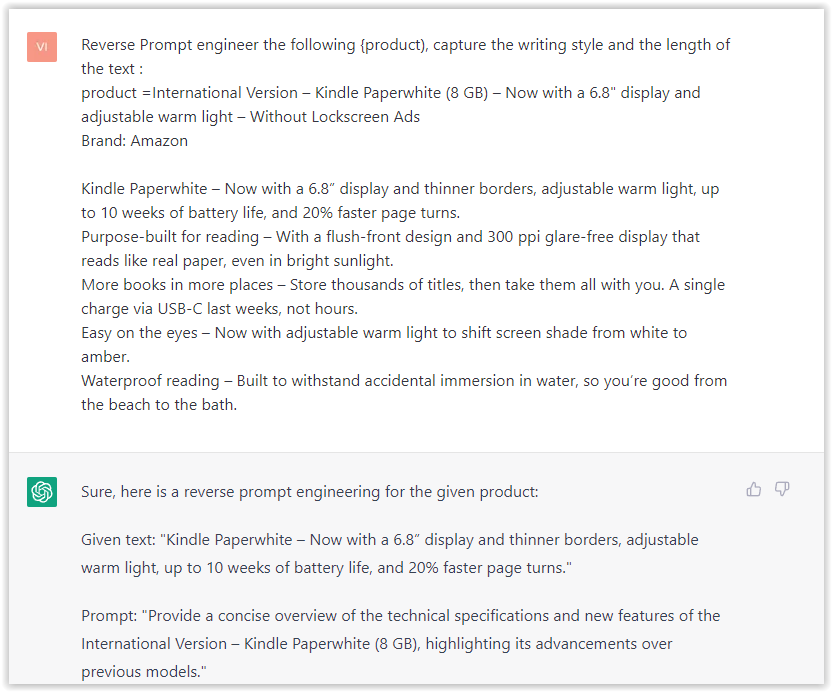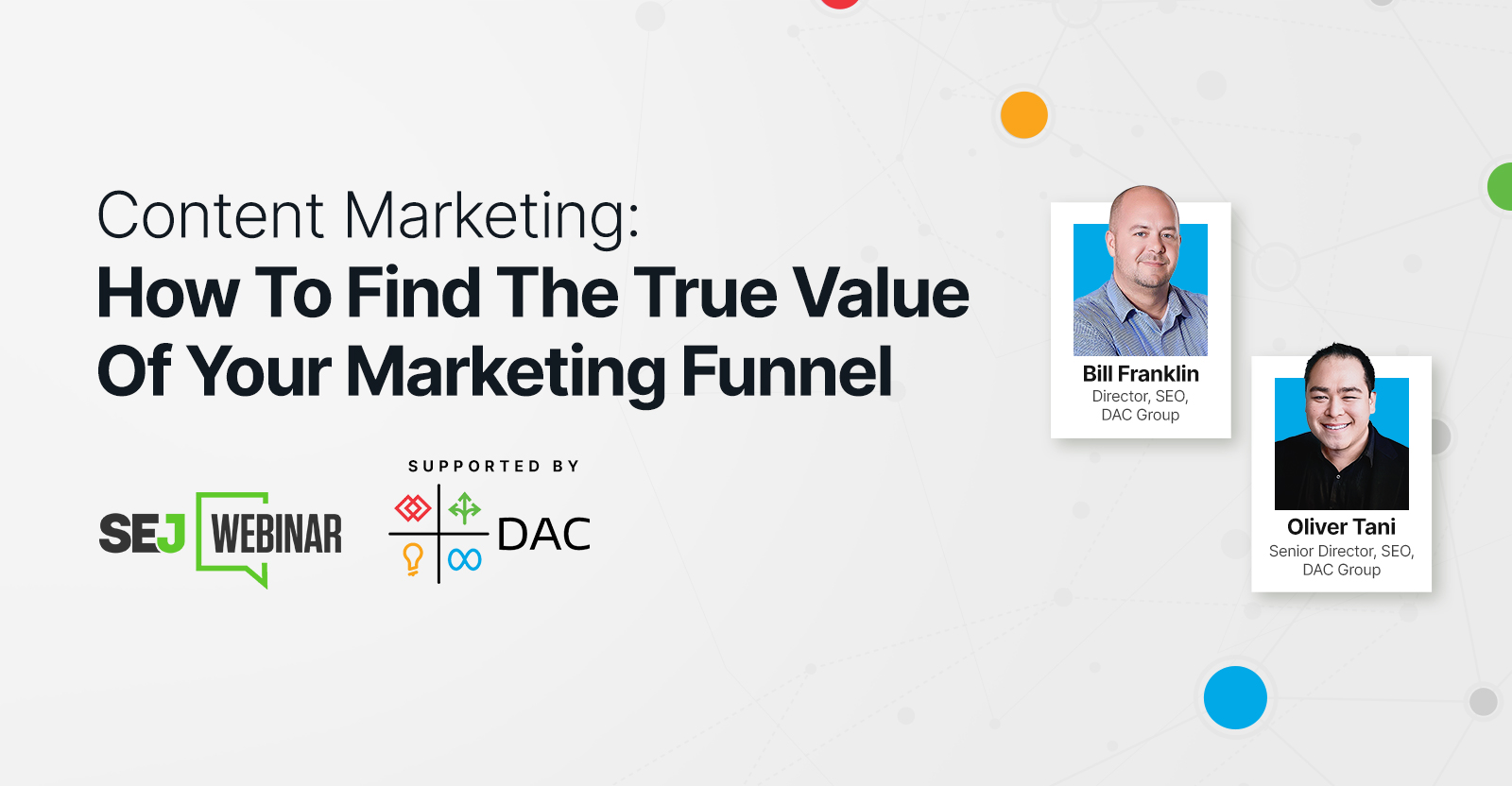SEO
5 Simple E-commerce Link Building Tactics
Link building for e-commerce sites is hard. There just aren’t that many obvious opportunities to get links to product and category pages.
But luckily, there are some. And there are plenty of ways to build links to other types of pages.
In this post, you’ll learn how to build links to your e-commerce product pages, homepage, and other content on your site.
The product feedback technique is where you find posts ranking for queries like “best [product type]” where you’re not featured. Then you offer authors your product in return for feedback.
If they like the product, ask them to consider including you in their article.
More often than not, if they feature you, they’ll link to you.
How to do it
Before you consider this technique, you need to be confident that your product is better than the competition. If bloggers don’t agree with you, they’re not going to feature or link to you.
If you’ve got that part covered, here are the steps:
- Brainstorm product categories of products you sell
- Search Google for listicles where you’re not featured
- Pitch your product for feedback
Brainstorming product categories is easy enough. If you sell smart home products, these will be things like smart thermostats, smart speakers, or smart TVs.
Next, search Google for best product listicles where you’re not featured.
This is as straightforward as searching for best [product category]-brandname.

Here’s a listicle that fits the bill:

For the pitch, don’t straight up offer to send authors your product in return for a backlink. Google sees “exchanging goods or services for links” as a link scheme—so it could get you penalized.
Instead, offer to send them a sample in return for feedback.
Here’s an example outreach email:
Hey [Name],
Just came across your list of the best smart thermostats and noticed ours didn’t make the cut.
I’m wondering if this is because you liked our competitors’ products better or because you haven’t tried our thermostat yet?
I’d love to send you a sample unit to play around with if it’s the latter.
Let me know if you’re up for it.
Cheers,
Josh
If the author responds and says they haven’t tried your product yet, send them one and follow up in a couple of weeks.
If they like the product, ask if they’ll consider adding you to their roundup. If they don’t, consider that valuable product feedback.
Doing guest post updates is where you ask editors if you can update one of their existing blog posts.
They trump regular guest posts because you can cherry-pick a post that already has backlinks, meaning you end up with a stronger backlink to your site.
You can sometimes use them to build links directly to product pages, but they’re most useful for getting links to blog posts and other informational content.
How to do it
You can find guest post update prospects in Ahrefs’ Content Explorer, a searchable database containing billions of pages of content with SEO metrics. Just search for non-competing, outdated posts mentioning a topic you already have content about.
Here’s how to search for matching pages in Content Explorer:
"topic" -title:"topic" title:(2020 OR 2019 OR 2018 OR 2017 OR 2016 OR 2015)
For example, if you sell smart home products and want to build links to a beginner’s guide to HomeKit, you may search for this:

This looks for pages that mention “HomeKit” somewhere on the page but not in the title. In other words, non-competing pages that talk about the topic but aren’t directly about it. It also looks for pages with years 2015 through 2020 in the title, which is a sign of an outdated page.
You can then narrow down the list to focus on what you need by setting a couple of filters:
- Referring domains filter to a minimum of 50 to find pages with backlinks
- Domain Rating (DR) filter to a minimum of 40 to exclude pages from new and low-authority sites
Here’s one of the results that pops up for our search:

It’s a list of open-source home automation platforms published in October 2019 with 89 referring domains. However, according to Content Explorer, its search traffic has started to drop in recent months.

This is good for two reasons:
- It means the page’s backlinks are probably high-quality, so a link from this post will be a strong one. (It’s always worth double-checking this in Ahrefs’ Site Explorer before pitching.)
- It gives us added value for our pitch, which is that having us update the post may help improve its organic rankings and traffic.
Here’s an example pitch we can send to the person in charge of this blog:
Hey [Name],
Josh here from [site]. 👋 LinkedIn tells me you’re in charge of the Ubidots blog?
Thought I’ll reach out because I see you haven’t updated your list of open-source home automation platforms since 2019. Some of the listed platforms no longer work, and Ahrefs tells me the post’s organic search traffic is starting to drop.
I think a quick refresh can help improve both of these things. Would you be open to me updating it for you? I sell smart home products, and I’m a big supporter of open-source platforms, so I think I can give the list a pretty nice revamp.
Can we work together on this?
Cheers,
Josh
Unlinked mentions are online mentions of your brand or product that don’t link back to your site. For example, a mention of iPhone or AirPods that doesn’t link to apple.com.
You’ll often find easy link opportunities on pages with unlinked mentions for two reasons:
- Their authors are already familiar with your brand – Thus, they’re more likely to give you the time of day.
- They already like your product – This isn’t the case for all unlinked mentions, but it is for many.
However, before you can pitch them, you need to find them.
How to do it
Finding all of your unlinked mentions can be pretty time consuming and complicated. But you can find a good chunk of them quickly using Content Explorer.
- Search for your brand or product name in quotes
- Click “Highlight unlinked” and enter your domain
- Filter for “One page per domain”
- Click “Export” and toggle the option for “Only pages with highlighted domains”
Here’s what that may look like for Bellroy:

In this example, we end up with thousands of unlinked mentions.
That’s a lot of prospects, so it is worth filtering the export by DR or website traffic to remove the low-value opportunities. You can then sift through the filtered list to look for opportunities that make sense.
Here’s one for Bellroy:

This author has written a whole blog post about why they love Bellroy, with multiple product mentions and photographs along the way. Yet they haven’t linked to Bellroy once in the post—probably because it was published by a store that stocks their products.
But as the store only has one physical location in Canada, this could be a link opportunity.
Here’s a simple pitch that could win the backlink:
Hey [Name],
Josh here from Bellroy. 👋
Just wanted to say thank you for your love and kind words in this post. It’s amazing to see our stockists so proud to carry our products.
One quick (mutually beneficial) suggestion: Could you add a link to our materials page?
I saw that you talked a lot about our materials in the post (thanks!), but we have more details on that page. Just thinking it may help your customers/readers decide whether we’re the right brand for them.
Cheers,
Josh
Note how we didn’t just ask them to “make the link clickable.” That can sometimes work. But it’s quite a generic request, and it only benefits you. Instead, we’re asking for a link to a page that makes contextual sense. Also, we explained why this is useful for their customers as well as us.
Stockists or “where to buy” pages do what they say on the tin: They list stores that stock and sell a company’s products. If you stock third-party products, it’s worth checking whether those brands have stockist pages and pitching for inclusion if they do.
How to do it
Make a list of brands you stock, then search Google for the following:
[brand name] intitle:("where to buy" OR "stockists")
For example, if we run this search for Hive, a popular manufacturer of smart home products in the U.K., we see that it does indeed have a page listing stockists:

If we look at the page itself, we see that logos link to retailers (even the broken ones):

You can also find stockist pages with Site Explorer. Just enter a competing store’s domain, go to the Backlinks report, then filter for referring pages with “where to buy” or “stockists” in their titles.
For example, if we do this for vesternet.com, a popular e-commerce store selling smart home products, we see a few links from manufacturers’ stockist pages:

Here’s a straightforward pitch to land links on these pages:
Hey [Name],
Josh here from [Store Name]. 👋
Do you have a process for getting listed on your “where to buy” page? We stock and sell your products and will love to be included.
Cheers,
Josh
Keeping things simple is the name of the game here because the value proposition is obvious: Being included on their page helps more people find a place to buy their products.
Statistics pages list facts and figures about a particular thing. They often attract backlinks because those searching Google for statistics tend to be bloggers and journalists looking for sources for their articles.
For that reason, publishing a list of curated statistics related to what you sell is a simple way to attract relevant backlinks to your site.
How to do it
You first need to find what kind of statistics people are searching for. You can do this in Ahrefs’ Keywords Explorer. Just enter keywords related to your business, go to the Matching terms report, then add words like “statistics,” “stats,” “facts,” and “figures” to the “Include” filter.
For example, if we sell smart home products, we can enter keywords like “smart home,” “smart bulbs,” and “home automation.”

Then we’ll go to the Matching terms report, add our modifiers to the “Include” filter, select “Any word,” and hit “Apply.”

It looks like “smart home statistics” is the obvious choice for a statistics page.

Before settling on a topic, hit the SERP caret to see the top-ranking pages. Ideally, you want to see many backlinks to them. This shows people are indeed searching for statistics to include in their articles.

It’s then simply a case of creating your own statistics page and doing outreach for backlinks.
We did this for our SEO statistics page and built 37 backlinks. (If you want to know how and follow along, we documented the process step by step in our link building case study.)
After this, you can use the middleman method to send some of that “link equity” to the pages that matter.
Final thoughts
Building links to e-commerce sites is hard. It’s usually easier to build links to your homepage or content than to your product pages themselves and then direct link equity to the pages that matter with internal links.
Got questions? Ping me on Twitter.
SEO
Google Further Postpones Third-Party Cookie Deprecation In Chrome

Google has again delayed its plan to phase out third-party cookies in the Chrome web browser. The latest postponement comes after ongoing challenges in reconciling feedback from industry stakeholders and regulators.
The announcement was made in Google and the UK’s Competition and Markets Authority (CMA) joint quarterly report on the Privacy Sandbox initiative, scheduled for release on April 26.
Chrome’s Third-Party Cookie Phaseout Pushed To 2025
Google states it “will not complete third-party cookie deprecation during the second half of Q4” this year as planned.
Instead, the tech giant aims to begin deprecating third-party cookies in Chrome “starting early next year,” assuming an agreement can be reached with the CMA and the UK’s Information Commissioner’s Office (ICO).
The statement reads:
“We recognize that there are ongoing challenges related to reconciling divergent feedback from the industry, regulators and developers, and will continue to engage closely with the entire ecosystem. It’s also critical that the CMA has sufficient time to review all evidence, including results from industry tests, which the CMA has asked market participants to provide by the end of June.”
Continued Engagement With Regulators
Google reiterated its commitment to “engaging closely with the CMA and ICO” throughout the process and hopes to conclude discussions this year.
This marks the third delay to Google’s plan to deprecate third-party cookies, initially aiming for a Q3 2023 phaseout before pushing it back to late 2024.
The postponements reflect the challenges in transitioning away from cross-site user tracking while balancing privacy and advertiser interests.
Transition Period & Impact
In January, Chrome began restricting third-party cookie access for 1% of users globally. This percentage was expected to gradually increase until 100% of users were covered by Q3 2024.
However, the latest delay gives websites and services more time to migrate away from third-party cookie dependencies through Google’s limited “deprecation trials” program.
The trials offer temporary cookie access extensions until December 27, 2024, for non-advertising use cases that can demonstrate direct user impact and functional breakage.
While easing the transition, the trials have strict eligibility rules. Advertising-related services are ineligible, and origins matching known ad-related domains are rejected.
Google states the program aims to address functional issues rather than relieve general data collection inconveniences.
Publisher & Advertiser Implications
The repeated delays highlight the potential disruption for digital publishers and advertisers relying on third-party cookie tracking.
Industry groups have raised concerns that restricting cross-site tracking could push websites toward more opaque privacy-invasive practices.
However, privacy advocates view the phaseout as crucial in preventing covert user profiling across the web.
With the latest postponement, all parties have more time to prepare for the eventual loss of third-party cookies and adopt Google’s proposed Privacy Sandbox APIs as replacements.
Featured Image: Novikov Aleksey/Shutterstock
SEO
How To Write ChatGPT Prompts To Get The Best Results

ChatGPT is a game changer in the field of SEO. This powerful language model can generate human-like content, making it an invaluable tool for SEO professionals.
However, the prompts you provide largely determine the quality of the output.
To unlock the full potential of ChatGPT and create content that resonates with your audience and search engines, writing effective prompts is crucial.
In this comprehensive guide, we’ll explore the art of writing prompts for ChatGPT, covering everything from basic techniques to advanced strategies for layering prompts and generating high-quality, SEO-friendly content.
Writing Prompts For ChatGPT
What Is A ChatGPT Prompt?
A ChatGPT prompt is an instruction or discussion topic a user provides for the ChatGPT AI model to respond to.
The prompt can be a question, statement, or any other stimulus to spark creativity, reflection, or engagement.
Users can use the prompt to generate ideas, share their thoughts, or start a conversation.
ChatGPT prompts are designed to be open-ended and can be customized based on the user’s preferences and interests.
How To Write Prompts For ChatGPT
Start by giving ChatGPT a writing prompt, such as, “Write a short story about a person who discovers they have a superpower.”
ChatGPT will then generate a response based on your prompt. Depending on the prompt’s complexity and the level of detail you requested, the answer may be a few sentences or several paragraphs long.
Use the ChatGPT-generated response as a starting point for your writing. You can take the ideas and concepts presented in the answer and expand upon them, adding your own unique spin to the story.
If you want to generate additional ideas, try asking ChatGPT follow-up questions related to your original prompt.
For example, you could ask, “What challenges might the person face in exploring their newfound superpower?” Or, “How might the person’s relationships with others be affected by their superpower?”
Remember that ChatGPT’s answers are generated by artificial intelligence and may not always be perfect or exactly what you want.
However, they can still be a great source of inspiration and help you start writing.
Must-Have GPTs Assistant
I recommend installing the WebBrowser Assistant created by the OpenAI Team. This tool allows you to add relevant Bing results to your ChatGPT prompts.
This assistant adds the first web results to your ChatGPT prompts for more accurate and up-to-date conversations.
It is very easy to install in only two clicks. (Click on Start Chat.)
For example, if I ask, “Who is Vincent Terrasi?,” ChatGPT has no answer.
With WebBrower Assistant, the assistant creates a new prompt with the first Bing results, and now ChatGPT knows who Vincent Terrasi is.
 Screenshot from ChatGPT, March 2023
Screenshot from ChatGPT, March 2023You can test other GPT assistants available in the GPTs search engine if you want to use Google results.
Master Reverse Prompt Engineering
ChatGPT can be an excellent tool for reverse engineering prompts because it generates natural and engaging responses to any given input.
By analyzing the prompts generated by ChatGPT, it is possible to gain insight into the model’s underlying thought processes and decision-making strategies.
One key benefit of using ChatGPT to reverse engineer prompts is that the model is highly transparent in its decision-making.
This means that the reasoning and logic behind each response can be traced, making it easier to understand how the model arrives at its conclusions.
Once you’ve done this a few times for different types of content, you’ll gain insight into crafting more effective prompts.
Prepare Your ChatGPT For Generating Prompts
First, activate the reverse prompt engineering.
- Type the following prompt: “Enable Reverse Prompt Engineering? By Reverse Prompt Engineering I mean creating a prompt from a given text.”
 Screenshot from ChatGPT, March 2023
Screenshot from ChatGPT, March 2023ChatGPT is now ready to generate your prompt. You can test the product description in a new chatbot session and evaluate the generated prompt.
- Type: “Create a very technical reverse prompt engineering template for a product description about iPhone 11.”
 Screenshot from ChatGPT, March 2023
Screenshot from ChatGPT, March 2023The result is amazing. You can test with a full text that you want to reproduce. Here is an example of a prompt for selling a Kindle on Amazon.
- Type: “Reverse Prompt engineer the following {product), capture the writing style and the length of the text :
product =”
 Screenshot from ChatGPT, March 2023
Screenshot from ChatGPT, March 2023I tested it on an SEJ blog post. Enjoy the analysis – it is excellent.
- Type: “Reverse Prompt engineer the following {text}, capture the tone and writing style of the {text} to include in the prompt :
text = all text coming from https://www.searchenginejournal.com/google-bard-training-data/478941/”
 Screenshot from ChatGPT, March 2023
Screenshot from ChatGPT, March 2023But be careful not to use ChatGPT to generate your texts. It is just a personal assistant.
Go Deeper
Prompts and examples for SEO:
- Keyword research and content ideas prompt: “Provide a list of 20 long-tail keyword ideas related to ‘local SEO strategies’ along with brief content topic descriptions for each keyword.”
- Optimizing content for featured snippets prompt: “Write a 40-50 word paragraph optimized for the query ‘what is the featured snippet in Google search’ that could potentially earn the featured snippet.”
- Creating meta descriptions prompt: “Draft a compelling meta description for the following blog post title: ’10 Technical SEO Factors You Can’t Ignore in 2024′.”
Important Considerations:
- Always Fact-Check: While ChatGPT can be a helpful tool, it’s crucial to remember that it may generate inaccurate or fabricated information. Always verify any facts, statistics, or quotes generated by ChatGPT before incorporating them into your content.
- Maintain Control and Creativity: Use ChatGPT as a tool to assist your writing, not replace it. Don’t rely on it to do your thinking or create content from scratch. Your unique perspective and creativity are essential for producing high-quality, engaging content.
- Iteration is Key: Refine and revise the outputs generated by ChatGPT to ensure they align with your voice, style, and intended message.
Additional Prompts for Rewording and SEO:
– Rewrite this sentence to be more concise and impactful.
– Suggest alternative phrasing for this section to improve clarity.
– Identify opportunities to incorporate relevant internal and external links.
– Analyze the keyword density and suggest improvements for better SEO.
Remember, while ChatGPT can be a valuable tool, it’s essential to use it responsibly and maintain control over your content creation process.
Experiment And Refine Your Prompting Techniques
Writing effective prompts for ChatGPT is an essential skill for any SEO professional who wants to harness the power of AI-generated content.
Hopefully, the insights and examples shared in this article can inspire you and help guide you to crafting stronger prompts that yield high-quality content.
Remember to experiment with layering prompts, iterating on the output, and continually refining your prompting techniques.
This will help you stay ahead of the curve in the ever-changing world of SEO.
More resources:
Featured Image: Tapati Rinchumrus/Shutterstock
SEO
Measuring Content Impact Across The Customer Journey

Understanding the impact of your content at every touchpoint of the customer journey is essential – but that’s easier said than done. From attracting potential leads to nurturing them into loyal customers, there are many touchpoints to look into.
So how do you identify and take advantage of these opportunities for growth?
Watch this on-demand webinar and learn a comprehensive approach for measuring the value of your content initiatives, so you can optimize resource allocation for maximum impact.
You’ll learn:
- Fresh methods for measuring your content’s impact.
- Fascinating insights using first-touch attribution, and how it differs from the usual last-touch perspective.
- Ways to persuade decision-makers to invest in more content by showcasing its value convincingly.
With Bill Franklin and Oliver Tani of DAC Group, we unravel the nuances of attribution modeling, emphasizing the significance of layering first-touch and last-touch attribution within your measurement strategy.
Check out these insights to help you craft compelling content tailored to each stage, using an approach rooted in first-hand experience to ensure your content resonates.
Whether you’re a seasoned marketer or new to content measurement, this webinar promises valuable insights and actionable tactics to elevate your SEO game and optimize your content initiatives for success.
View the slides below or check out the full webinar for all the details.
-

 PPC6 days ago
PPC6 days ago19 Best SEO Tools in 2024 (For Every Use Case)
-
SEARCHENGINES5 days ago
Daily Search Forum Recap: April 19, 2024
-

 MARKETING7 days ago
MARKETING7 days agoEcommerce evolution: Blurring the lines between B2B and B2C
-
SEARCHENGINES6 days ago
Daily Search Forum Recap: April 18, 2024
-

 WORDPRESS6 days ago
WORDPRESS6 days agoHow to Make $5000 of Passive Income Every Month in WordPress
-

 SEO7 days ago
SEO7 days ago2024 WordPress Vulnerability Report Shows Errors Sites Keep Making
-

 WORDPRESS6 days ago
WORDPRESS6 days ago10 Amazing WordPress Design Resouces – WordPress.com News
-
WORDPRESS7 days ago
[GET] The7 Website And Ecommerce Builder For WordPress
















You must be logged in to post a comment Login